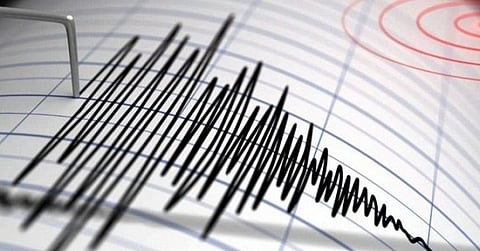
- Home
- Live Blog
- Breaking News
- Top Headlines
- Cities
- NE News
- Sentinel Media
- Sports
- Education
- Jobs

Staff Reporter
Guwahati: The central government has started research for developing an Earthquake Early Warning (EEW) System for the Himalayan region, although it is still at a nascent stage.
According to the Ministry of Earth Sciences, India has a well-defined National Seismological Network, expanded in the length and breadth of the country, that monitors seismic activity 24x7 around the corner in real-time mode and disseminates earthquake-related parameters and reports to various stakeholders and the public nationwide promptly through the Bhukamp App and a unified Dissemination System.
It is to be noted that Assam and the NE region experienced a large number of earthquakes in 2025. Assam was hit by 17 earthquakes in the month of September alone, which was the country’s highest in that month.
It was also stated by the Ministry of Earth Sciences (MoES) that the National Disaster Management Authority (NDMA) has undertaken the Earthquake Disaster Risk Indexing (EDRI) project to systematically address the challenges of rapid urbanization and ensure earthquake resilience in growing cities and assess earthquake risk across Indian cities.
Also, research efforts have started in India for developing an Earthquake Early Warning (EEW) System for the Himalayan region, but these are still at a nascent stage. The National Centre for Seismology (NCS), MoES, has started concerted efforts to develop an Earthquake Early Warning (EEW) System for the Himalayan region under its pilot project. However, the National Centre for Seismology (NCS) under MoES is capable of recording any earthquake of M:2.5 and above in and around Delhi, M:3.0 and above for the NE region, M:3.5 and above in the Peninsular and extra-peninsular region, M:4.0 and above in the Andaman region, and M:4.5 and above in border regions lying between 0-40 degrees N and 60-100 degrees East.
NCS monitors the earthquake activity in and around the country on a 24x7 basis, and this information is disseminated after the occurrence of the earthquake to all nodal state and central disaster management authorities in the least possible time. For this purpose, NCS maintains the National Seismological Network (NSN), comprising 166 permanent seismological observatories spread across the country.
Additionally, probabilistic seismic hazard maps by the Bureau of Indian Standards (BIS) and seismic microzonation of strategic cities falling in the seismic Hazard Zone III, IV, and V by NCS-MoES and its technical partner institutes a step towards earthquake risk mitigation in the country.
According to NDMA, during the last 15 years, the country experienced 10 major earthquakes that resulted in over 20,000 deaths. As per the current seismic zone map of the country (IS 1893: 2002), over 59 per cent of India’s land area is under threat of moderate to severe seismic hazard; that means it is prone to shaking of MSK Intensity VII and above (BMTPC, 2006). In fact, the entire Himalayan belt is considered prone to great earthquakes of magnitude exceeding 8.0, and in a relatively short span of about 50 years, four such earthquakes have occurred: the 1897 Shillong (M8.7), 1905 Kangra (M8.0), 1934 Bihar-Nepal (M8.3), and 1950 Assam-Tibet (M8.6) earthquakes. Scientific publications have warned of the likelihood of the occurrence of very severe earthquakes in the Himalayan region, which could adversely affect the lives of several million people in India.
The northeastern part of the country continues to experience moderate to large earthquakes at frequent intervals, including the two great earthquakes mentioned above. Since 1950, the region has experienced several moderate earthquakes. On average, the region experiences an earthquake with a magnitude greater than 6.0 every year. The Andaman and Nicobar Islands are also situated on an inter-plate boundary and frequently experience damaging earthquakes.
Also Read: Assam Earthquakes: 17 Quakes Hit State in September